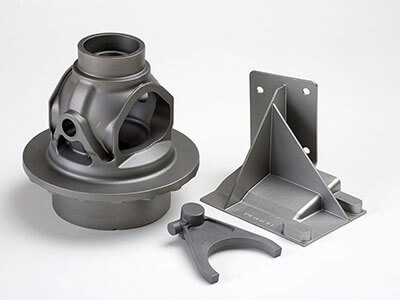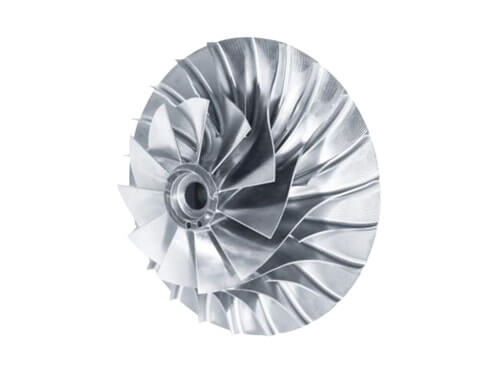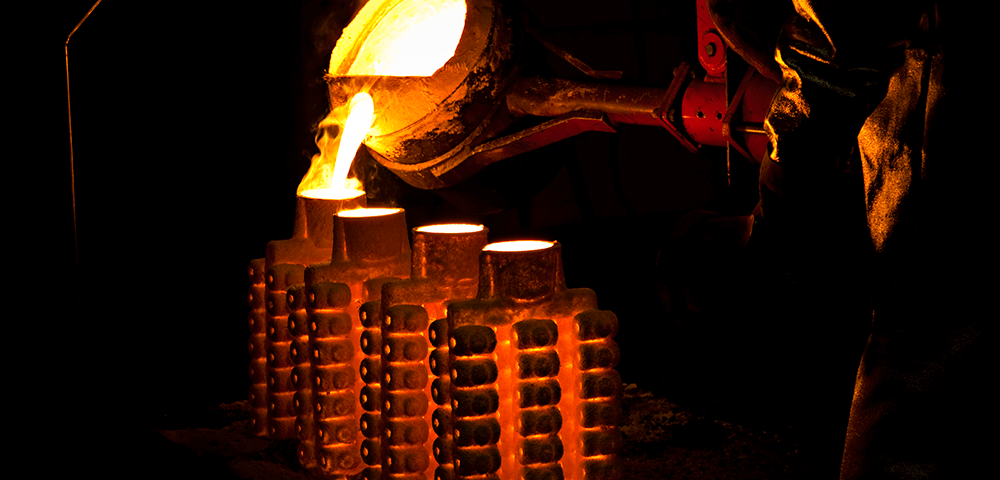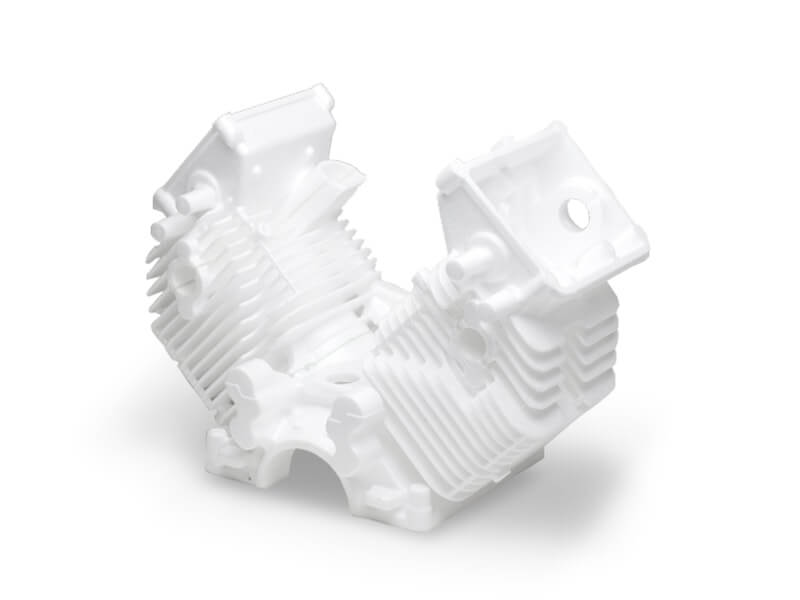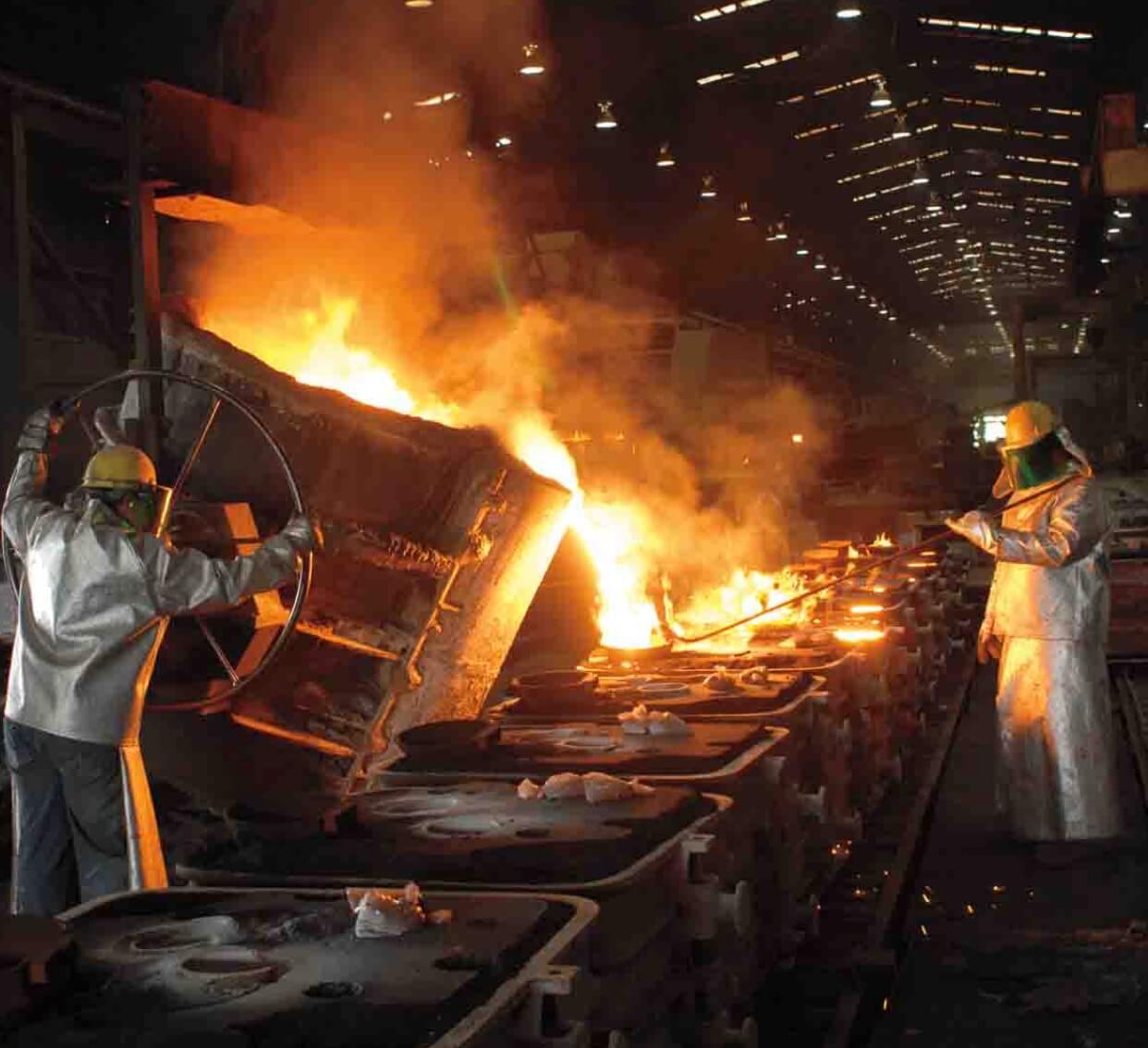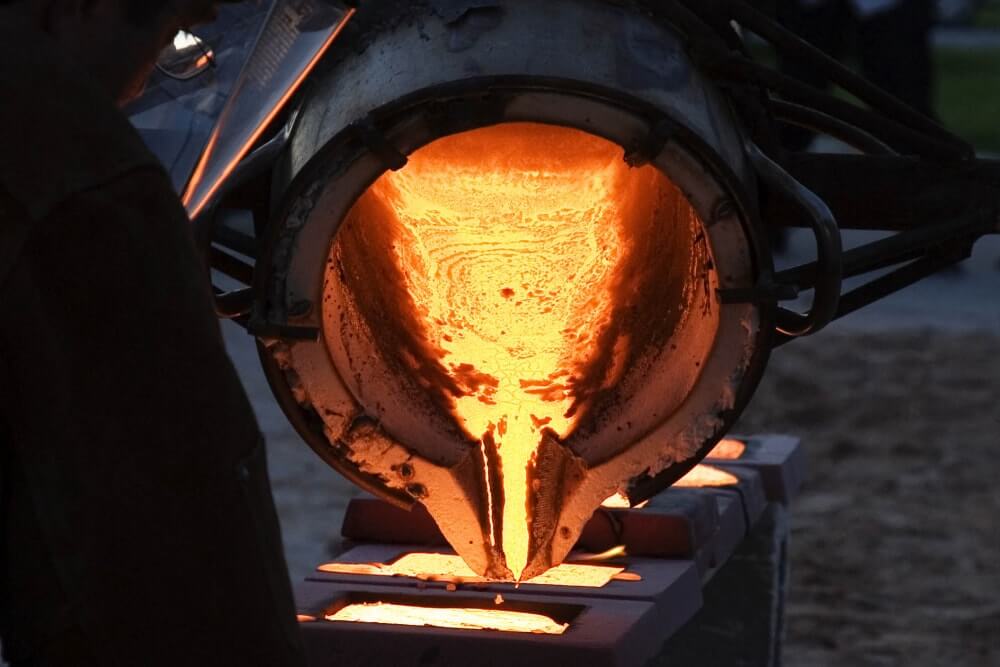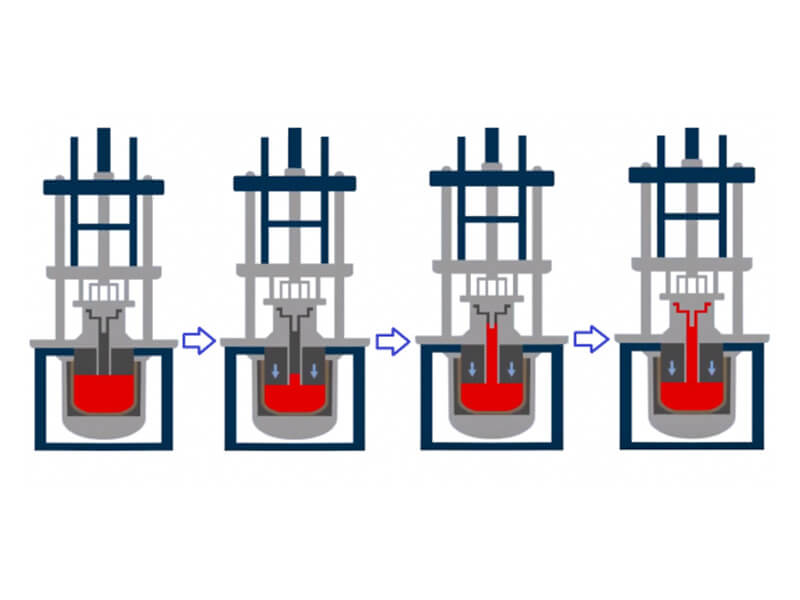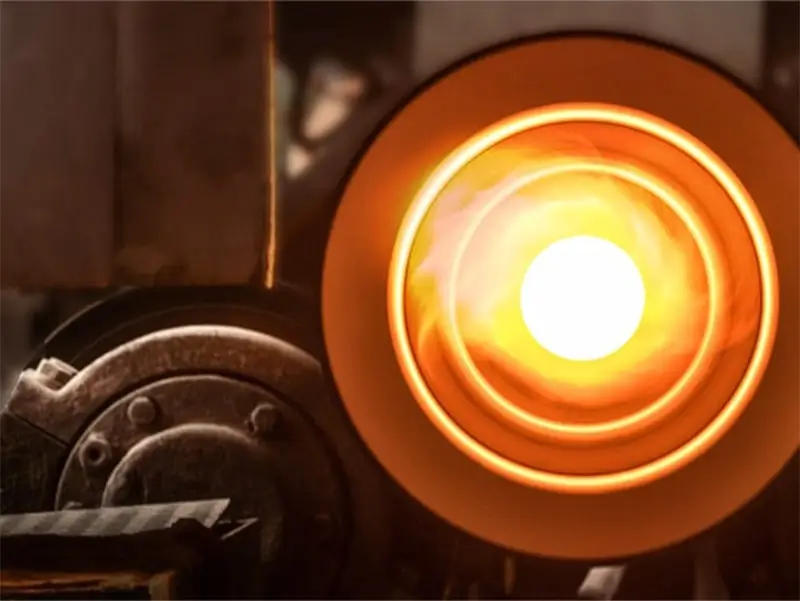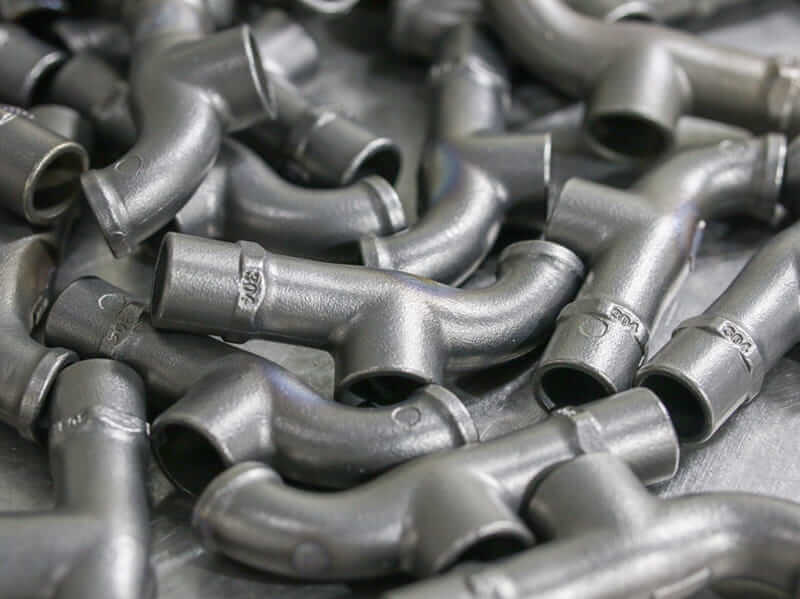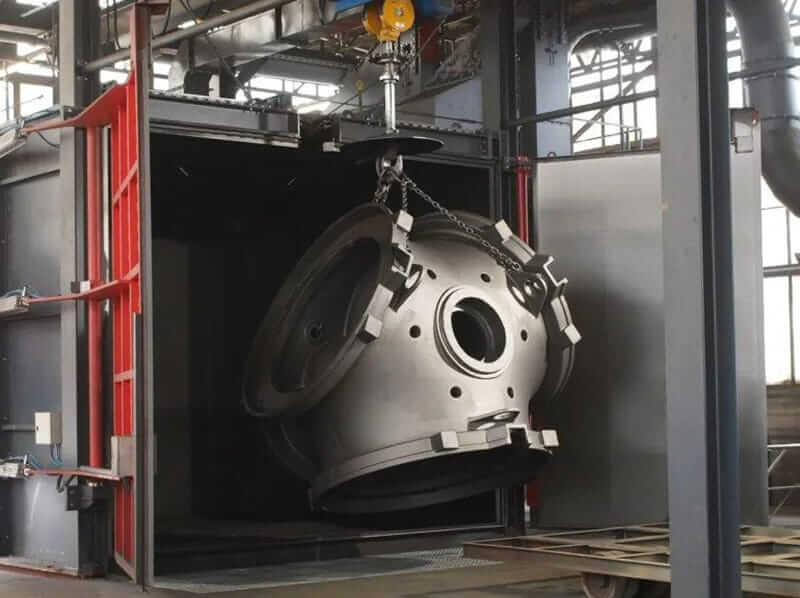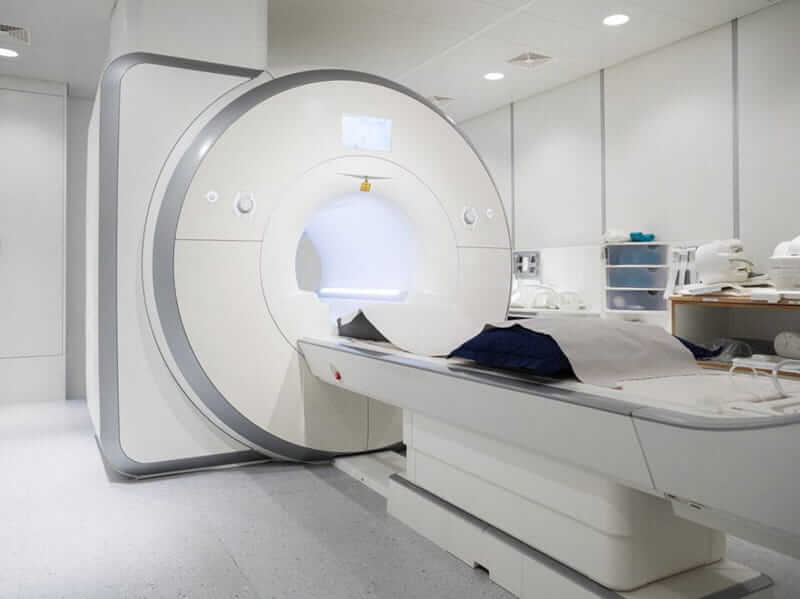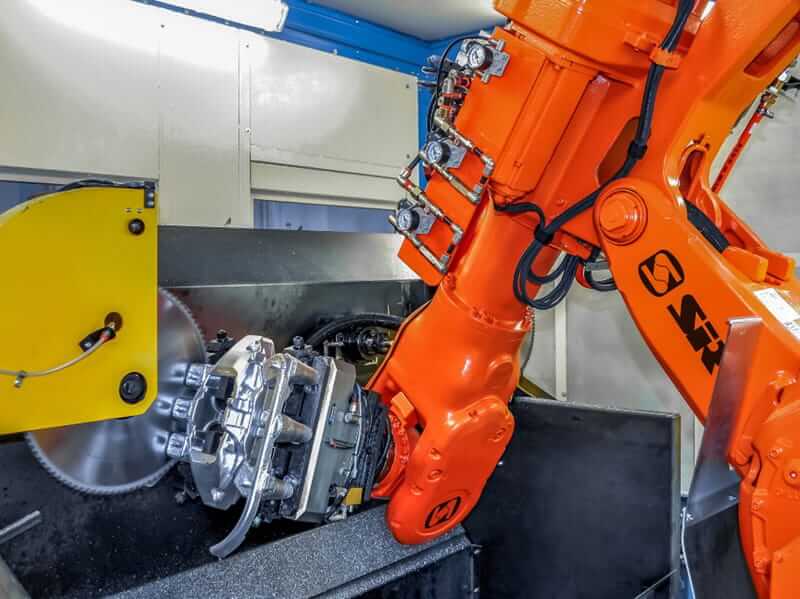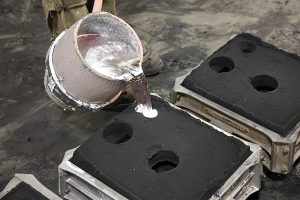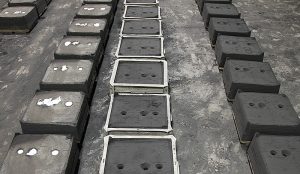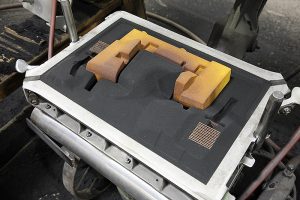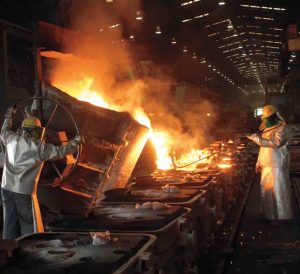Sand, plastic, clay or wax are used for the casting process. These molds are discarded after use.
What is Metal Casting?
Metal casting is the process of making objects by pouring molten metal into a mold that has a shaped space. The metal then cools and hardens to a solidified part. Historically it is used to make complex and/or large parts, when it comes to mass production, casting is often a cheaper way to manufacture parts than machining them from a solid piece of metal.
There are many metal casting methods to choose from. What type of casting is most efficient depends on the metals used, the size of the run, and the complexity of the casting. Metal casting can be divided into two groups: processes with expendable molds and processes with permanent molds.
The molds are generally metal, but the method of performing the casting differs greatly from many expendable methods.
